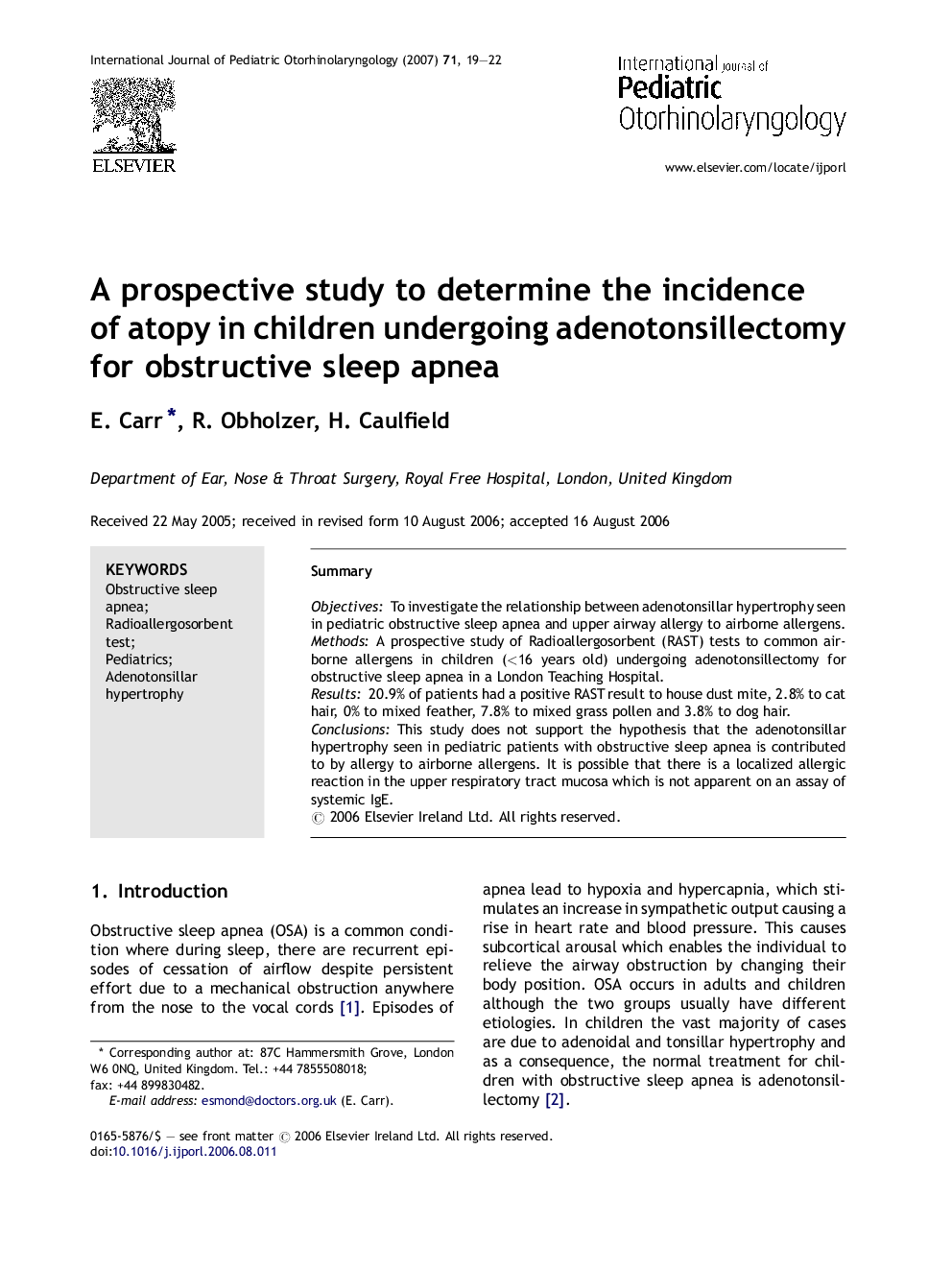| Article ID | Journal | Published Year | Pages | File Type |
|---|---|---|---|---|
| 4115718 | International Journal of Pediatric Otorhinolaryngology | 2007 | 4 Pages |
SummaryObjectivesTo investigate the relationship between adenotonsillar hypertrophy seen in pediatric obstructive sleep apnea and upper airway allergy to airborne allergens.MethodsA prospective study of Radioallergosorbent (RAST) tests to common airborne allergens in children (<16 years old) undergoing adenotonsillectomy for obstructive sleep apnea in a London Teaching Hospital.Results20.9% of patients had a positive RAST result to house dust mite, 2.8% to cat hair, 0% to mixed feather, 7.8% to mixed grass pollen and 3.8% to dog hair.ConclusionsThis study does not support the hypothesis that the adenotonsillar hypertrophy seen in pediatric patients with obstructive sleep apnea is contributed to by allergy to airborne allergens. It is possible that there is a localized allergic reaction in the upper respiratory tract mucosa which is not apparent on an assay of systemic IgE.
